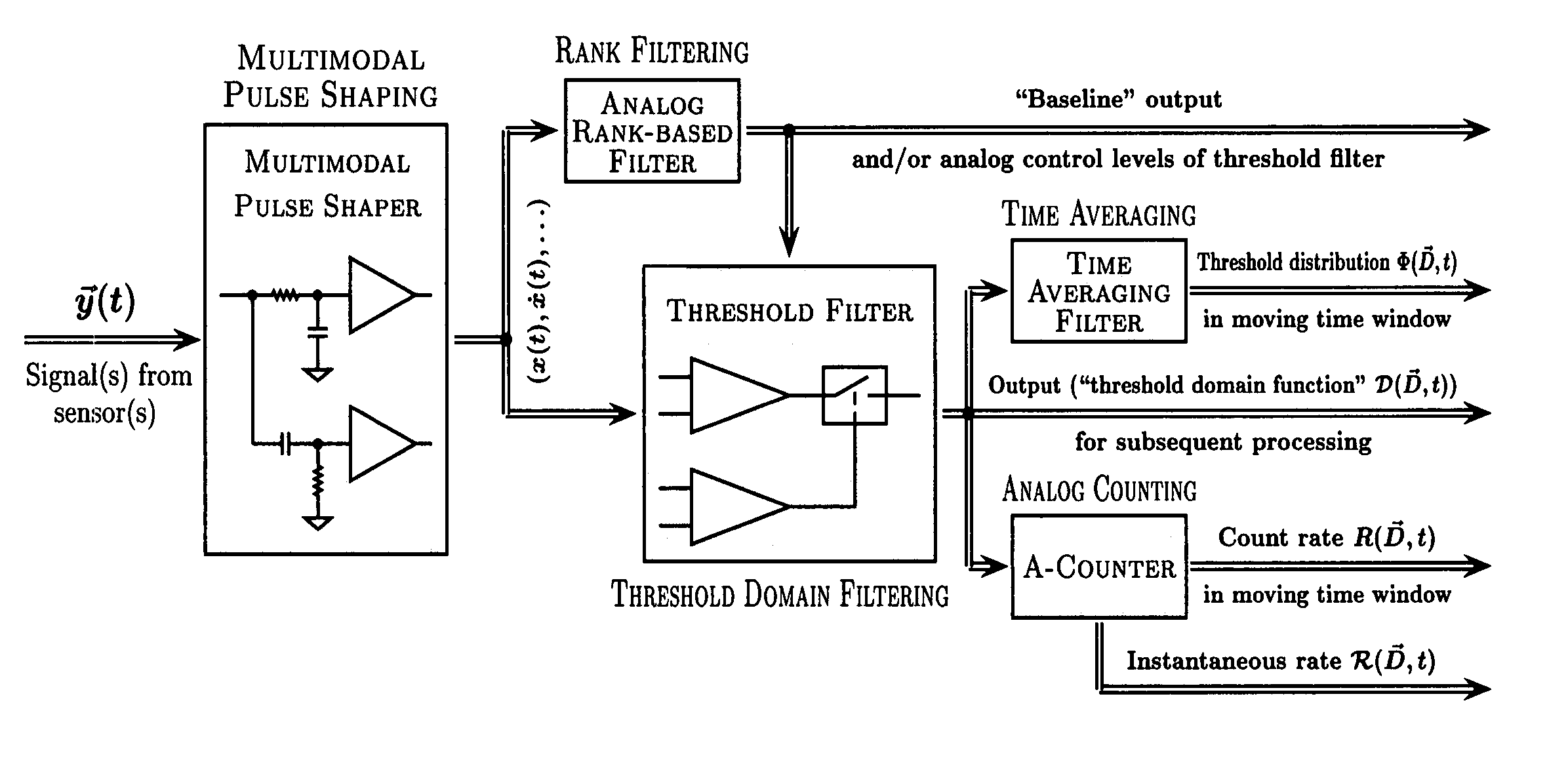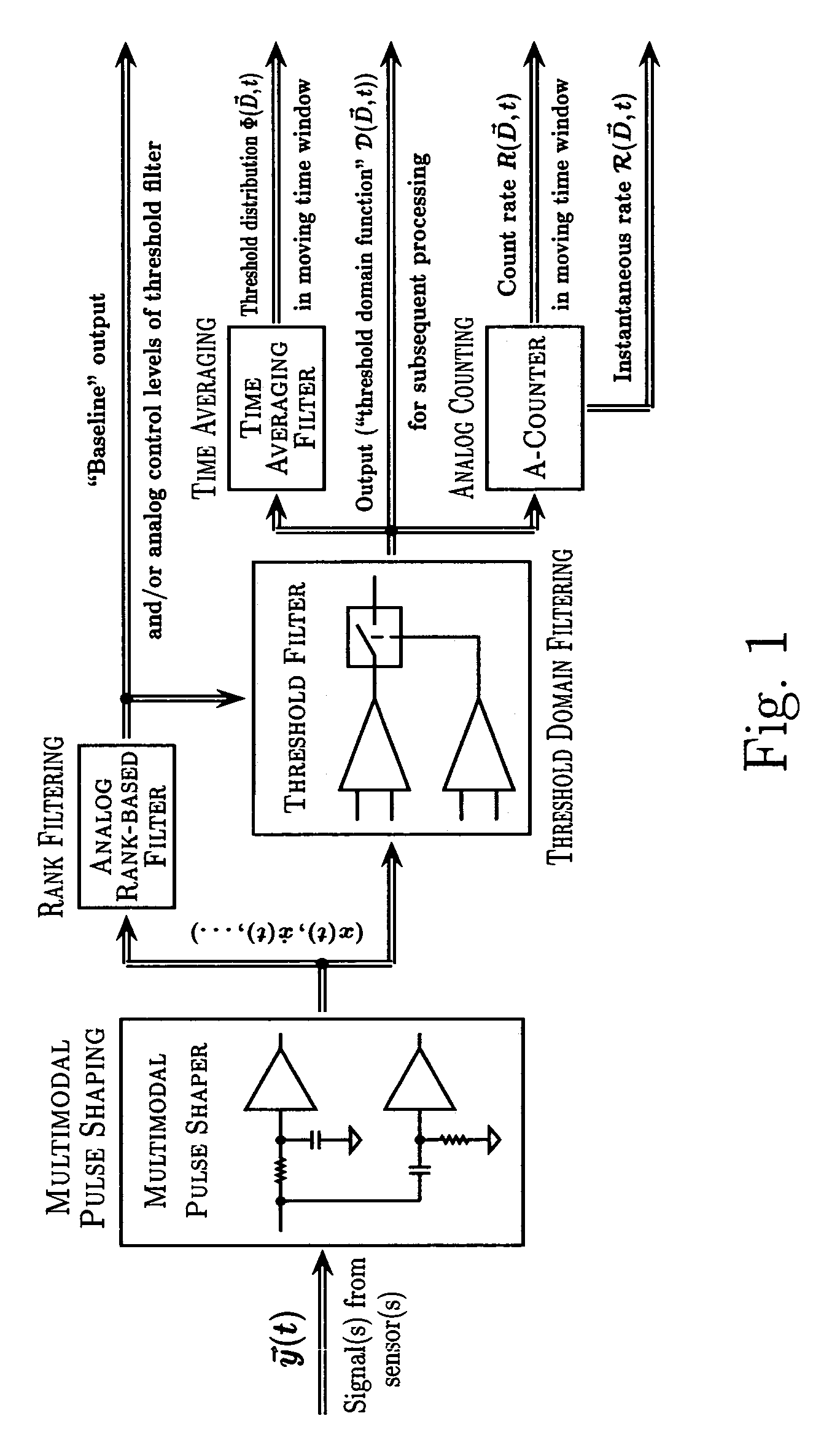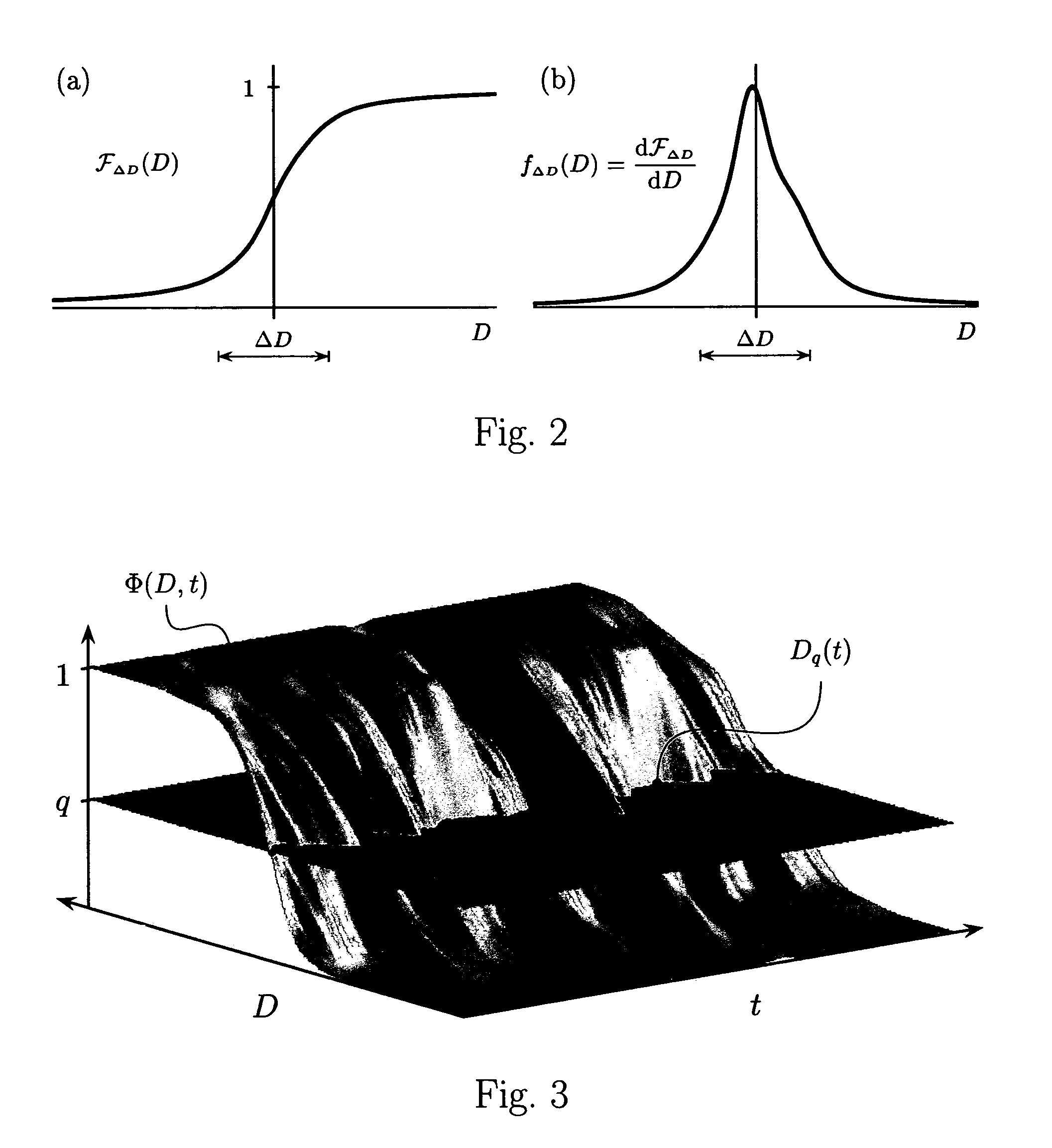Method and apparatus for adaptive real-time signal conditioning, processing, analysis, quantification, comparision, and control
a real-time signal and adaptive technology, applied in the field of methods, processes and apparatus for real-time measurement and analysis of variables, can solve the problems of increasing the complexity of digital devices, reducing the efficiency of all operations, and high hardware and software implementation costs, so as to reduce the noise introduced into data, and reduce the cost of hardware and software implementation. the effect of high efficiency
- Summary
- Abstract
- Description
- Claims
- Application Information
AI Technical Summary
Benefits of technology
Problems solved by technology
Method used
Image
Examples
Embodiment Construction
[0043]For convenience, the essential terms used in the subsequent detailed description of the invention are provided below, along with their definitions adopted for the purpose of this disclosure. Some examples clarifying and illustrating the meaning of the definitions are also provided. Note that the sections and equations in this part are numbered separately from the rest of the disclosure. Additional explanatory information on relevant terms and definitions can be found in U.S. patent application Ser. No. 09 / 921,524 and U.S. Provisional Patent Application No. 60 / 416,562, which are incorporated herein by reference in their entirety. Some other terms and their definitions which might appear in this disclosure will be provided in the detailed description of the invention.
D-1 Continuous Comparators and Probes
[0044]Consider a simple measurement process whereby a signal χ(t) is compared to a threshold value D. The ideal measuring device would return ‘0’ or ‘1’ depending on whether χ(t)...
PUM
 Login to View More
Login to View More Abstract
Description
Claims
Application Information
 Login to View More
Login to View More - R&D
- Intellectual Property
- Life Sciences
- Materials
- Tech Scout
- Unparalleled Data Quality
- Higher Quality Content
- 60% Fewer Hallucinations
Browse by: Latest US Patents, China's latest patents, Technical Efficacy Thesaurus, Application Domain, Technology Topic, Popular Technical Reports.
© 2025 PatSnap. All rights reserved.Legal|Privacy policy|Modern Slavery Act Transparency Statement|Sitemap|About US| Contact US: help@patsnap.com



